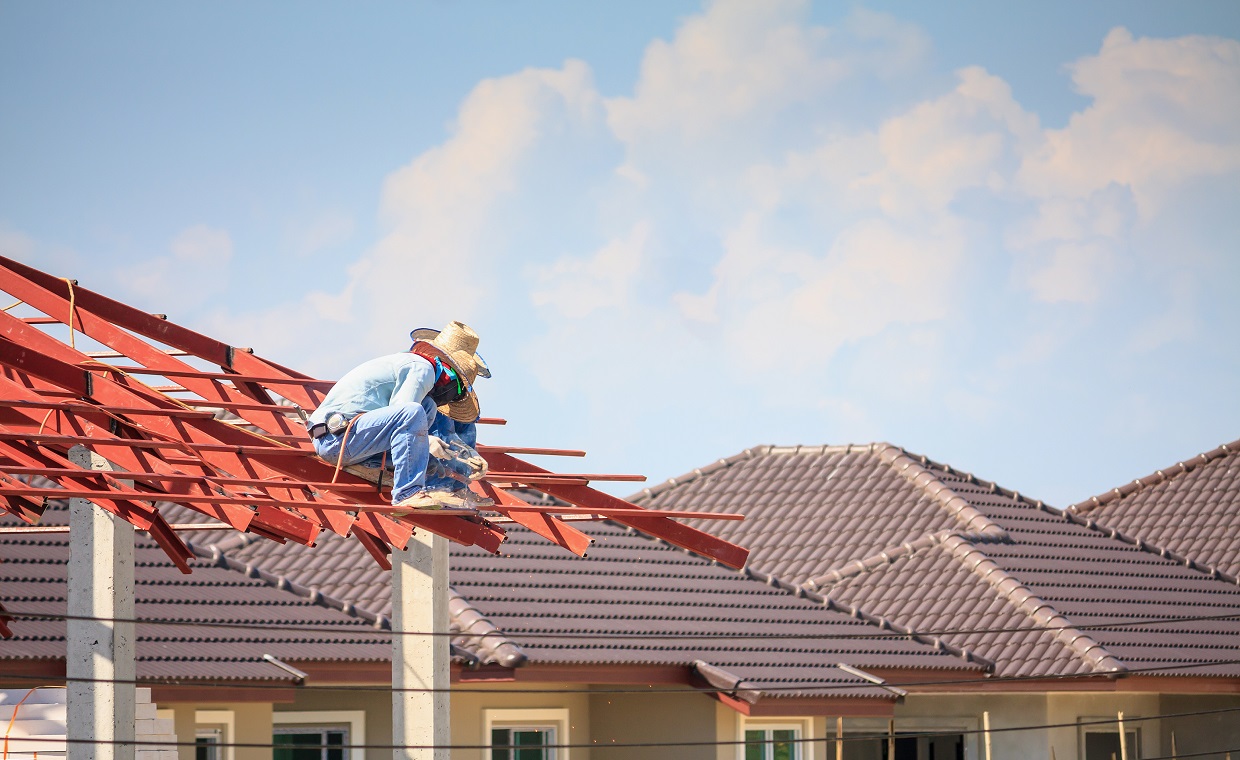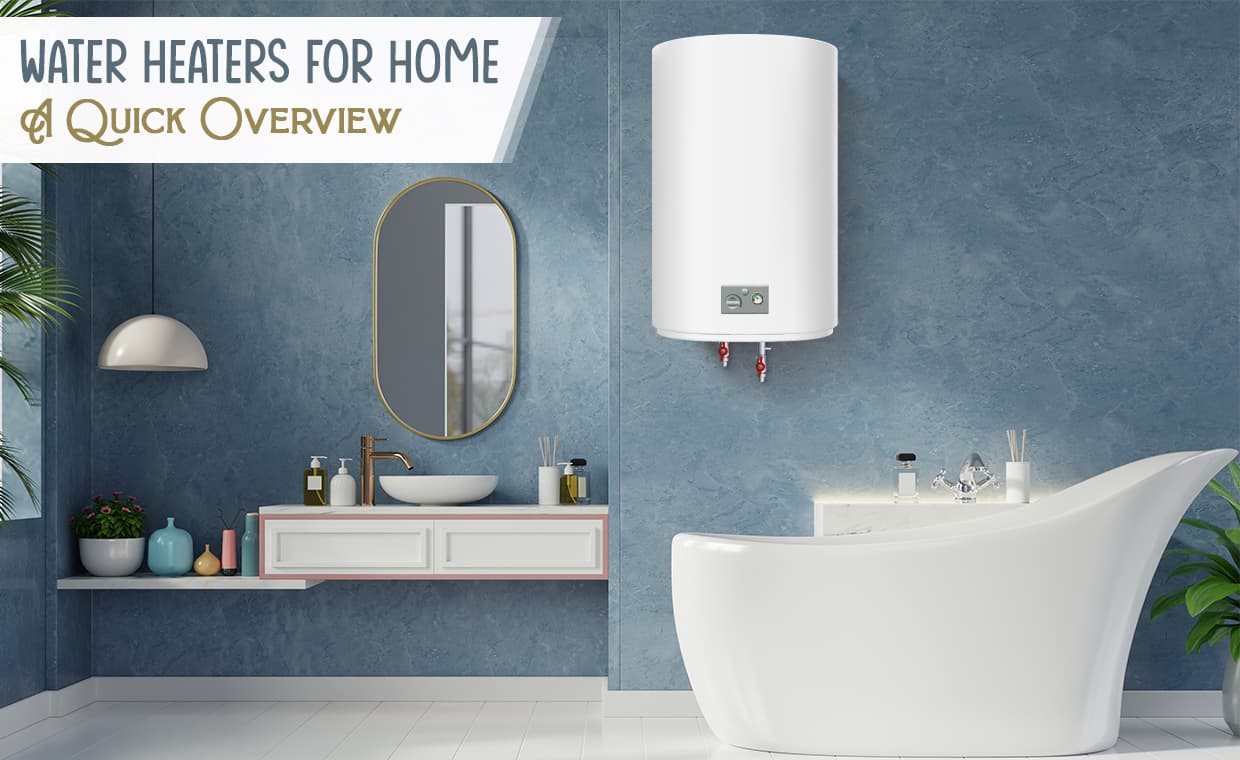
Table of Contents
Quick Summary
- A water heater is an appliance used to heat and store water for household use.
- There are five main types of water heaters: Storage tank water heaters, Tankless water heaters, Condensing water heaters, and Heat pump water heaters.
- A water heater contains several key components, including: flue pipe, overflow pipe, thermocouple, burner, insulation, anode rod, T&P relief valve, dip tube, drain valve, hot-water outlet, and heating elements. Each part plays a safety or heating role.
- In tank-type heaters cold water enters through the dip tube, is heated at the bottom, rises to the top, and exits via the hot-water outlet. Water is continuously reheated as the tank refills.
- In tankless heaters cold water flows through a coil where it is instantly heated by a gas burner or electric element when the tap is turned on.
- Solar heaters and heat pumps offer major energy savings, while tankless heaters provide endless hot water.
- Storage tank heaters remain the most widely used due to their affordability and simplicity.
Water Heater Basics are useful information when you are buying a new water heater. Are you looking for a new water heater and don’t know where to start? Don’t fret. You’re in the right place. By the time you read the last syllable of this article, you will have learned all the water heater basics:
- What a water heater is
- Main types of water heaters
- Components of a water heater, and
- How does a water heater work?
Now, let’s dive in and take a look at the water heater basics.

What is a Water Heater?
A water heater is an apparatus usually used for heating water and storing the same.
What are the Types of Water Heaters?
There are five main types of hot water heaters:
01. Conventional Storage Tank Water Heaters:

Conventional storage tank water heaters are the most common type used in family homes. They have a tank that stores hot water for faucets and showers.
The tank capacity determines the amount of hot water available at once in your home. So, if your tank capacity is small and you need an excessive amount of water, it might run out, forcing you to wait for an hour or more for the tank to be refilled.
It is insulated to enable keep the water warm until it’s needed. It also has two valves for pressure control and temperature control.
The pressure control valve lowers the pressure when it reaches around 150 psi (10kg/cm2) while the temperature valve moderates the water temperature when it rises above 120 oF (50o C).
The good thing about these tanks is that they’re the most affordable and are pretty easy to install.
02. Tankless Water Heaters:

These heaters have no tank. Instead, they have super-heated coils filled with water and heat it with a flash on demand.
If your family is large and needs a large amount of hot water at once, the tankless water heater is for you as it produces an endless amount of hot water.
The good thing about these tanks is that they are about 80% efficient.How? First, they don’t lose any heat as they don’t store water. Secondly, they don’t heat water continuously when the water temperature drops.
Tankless water heaters are also more durable than others in the market. They have a life expectancy of over 20 years, while the typical water heater last less than 12 years.
Now you are thinking that how do you pick the best tankless water heater for your needs? You can know by visiting the following article –
03. Solar Water Heaters:

Feature an insulated tank and a solar collector. They depend entirely on solar power and use roof-mounted panels that transfer heat via a closed roof system linked with a water tank that heats the water.
Did you know that using a solar water heater can save you as much as $400 each year in operating costs? They use the sun’s power, making them the cheapest when it comes to producing hot water. Solar heaters have insulators that keep the water hot all day and all night.
With good maintenance, solar heaters can last for over 20 years.
However, this type of water heater does excellent only in areas that experience plentiful sunshine. So, if you live in cold regions with little sunlight, a solar water heater may not prove to be fruitful to you. You’ll be required to look for a types of electric water heaters or types of gas-powered water heater.
So, how do you choose a good solar water heater? There are a variety of domestic solar hot water systems available. As a result, making a decision can be difficult. You may get your answer by referring to the following –
04. Condensing Water Heaters:
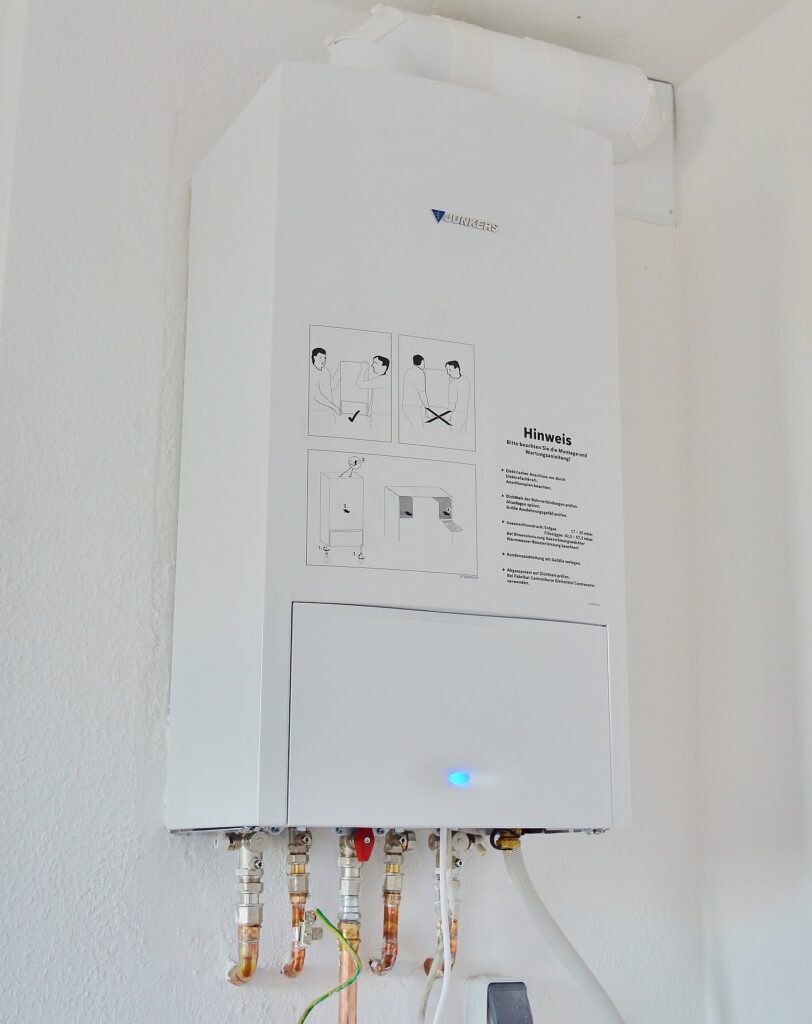
If you are using natural gas in your home, this type of water heater is for you. They primarily use natural gas as a source of energy. These tanks come in tankless and tank-type versions and heat water by using natural gas and air-fuel.
Like tankless water heaters, these heaters produce hot water quickly and instantly. The water is directly heated as it fills up, enabling you to enjoy a near-constant flow of hot water.
Condensing water heaters have an efficiency rating of 98 percent, unlike the tankless water heaters and standard natural gas, which have an efficiency of around 60 to 70 percent. With regular maintenance, condensing water heaters can serve you for about 10-15 years.
05. Heat Pump Water Heater:

Courtesy - jasperremc
Heat Pump Water Heaters, often referred to as hybrid water heaters, resemble traditional tank water heaters but function quite differently. These systems are optimal for areas with temperatures ranging between 40°C and 80°C, meaning they might not be suitable for extremely hot or cold climates. Instead of directly generating heat, these heaters leverage the heat present in the surrounding air or even the ground. Their operational mechanism involves using electricity predominantly to transfer heat from one area to another, rather than producing the heat directly.
In a comparison between gas water heaters and heat pumps, the latter emerges as a more environmentally friendly option. Gas heaters, while cheaper initially, have a significant environmental footprint, emitting greenhouse gases. Heat pumps, especially air-source and ground-source types, are 3-4 times more energy efficient. Though their upfront costs are higher, they draw on renewable sources, aligning with eco-conscious choices.
One caveat with heat pumps, however, is their limited capability in providing hot water at the same rate as traditional heaters. Thus, while they’re excellent for heating, an auxiliary system might be needed for consistent hot water supply.
If sustainability and energy efficiency rank high on your list, a Heat Pump Water Heater could be an ideal choice for your home.
What are the Components of a Water Heater and Their Functions?
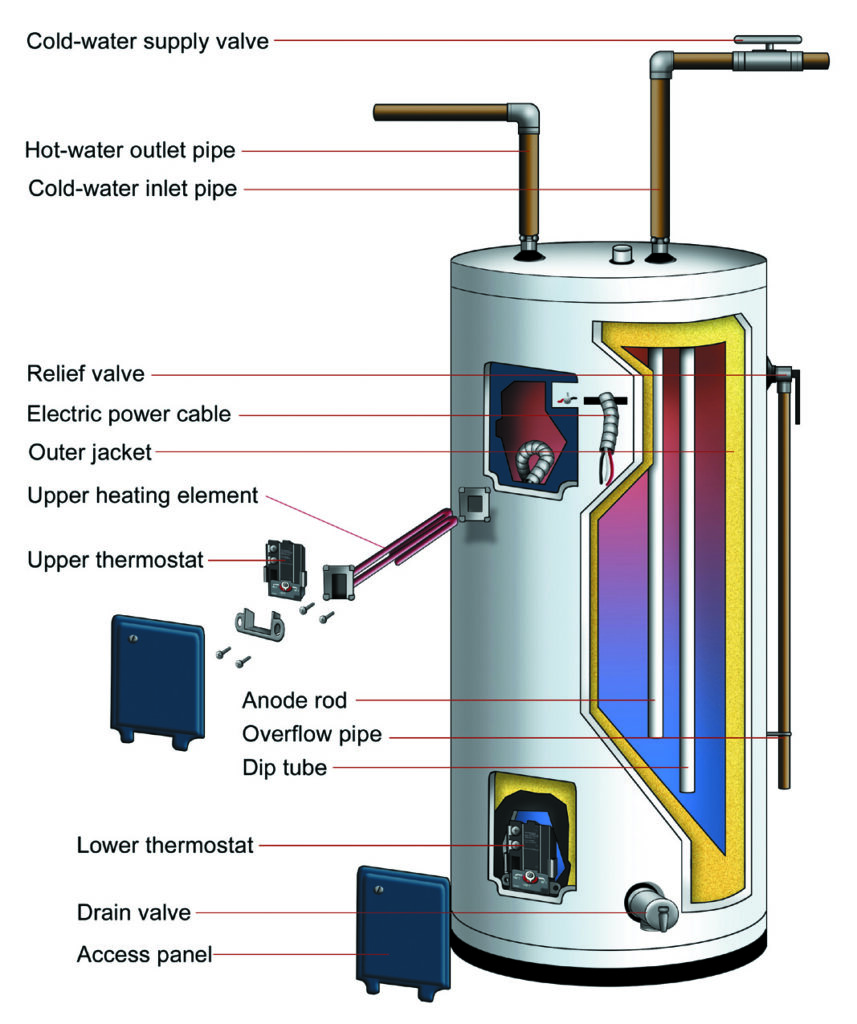
Below are the parts of a water heater and their functions:
1.Flue Pipe – A flue pipe empties the poisonous gases like carbon monoxide that are formed during combustion.
2. Overflow Pipe – It’s a pipe attached to the temperature and pressure relief valve. When the temperature and pressure relief valve releases excess steam/heat, the overflow pipe allows the water to drain away from the heater safely.
3. Thermocouple – It is a device that monitors the pilot flame in a water heater. If the pilot office has a foul smell, the thermocouple makes the valve shut off the gas flow to the main burner and the pilot flame.
4. Burner – It is located at the bottom of the water heater tank. It ignites a natural gas that heats the tank. The tank then distributes the heat throughout the water inside.
5. Insulation – Insulation is installed in all tank-type water heaters. It’s wrapped in a metal tank to prevent heat loss.
6. Anticorrosion Anode Rod – It’s a safety measure of the tank heater. Through electrolytes, an anti-corrosion anode rod prevents the tank from rusting.
7. A Hot Water Outlet is a pipe that allows hot water to exit from the heater and enter into the home’s potable water supply.
8. Valve – Water heaters have five valves:
a) Drain Valve – The drain valve is located at the bottom of the tank-type water heater. It enables the tank to drain out residues inside the tank.
b) Control Valve (Thermostat) – This mechanism controls the water getting into the heater.
c) Gas Supply Valve – The gas supply valve shuts off the gas to the water heater.
d) The Coldwater Shut-off Valve shuts down the cold water supply when you want to replace or drain the heater.
e) Temperature and Pressure Relief Valve allows excess heat or pressure to be released from the hot water tank to prevent it from exploding.
9. A Draft Diverter is a fitting on the pipe’s end. It collects the gases to be evacuated safely into the flue and finally to the outside.
10. Elements – Heat is transferred to the water through elements. They are connected to water heaters that run on electricity.
11. Dip Tube – This is a tube linked with the inlet of cold water. It extends close to the tank’s bottom. The dip tube allows the cold water from the municipal water supply or other water source to enter the tank.
How Does a Water Heater Work?
So, how do these components work together? Well, since water heaters come in two styles – tank-type water heaters and tankless water heaters. Here we are going to discuss the water heater working principle for each type.
01. Tank-Type Water Haters:
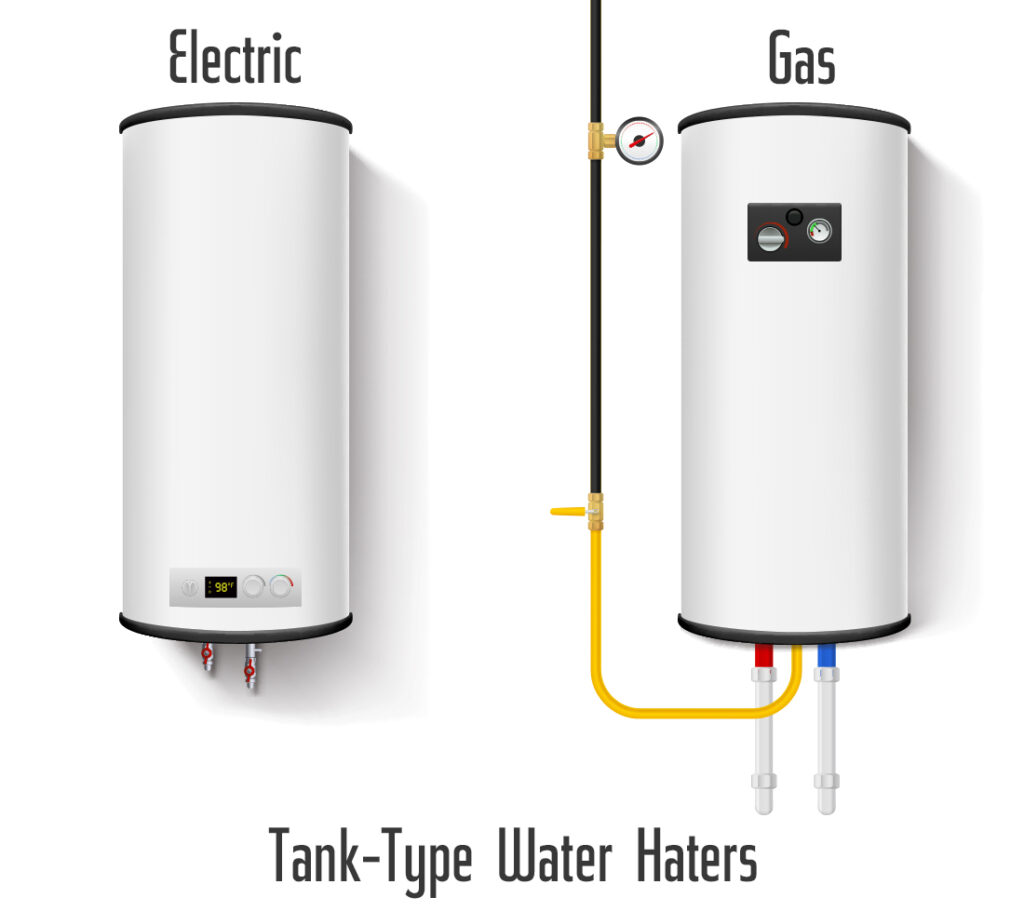
These types of hot water heaters operate on electricity or natural gas. They generally have three pipes for transferring water. One pipe moves out the hot water while the other brings in the cold water.
When you turn the hot water tap on, the cold water passes through the shut-off valves and enters the tank through the dip tube. The heating elements at the bottom of the tank heat the water.
The warm water rises to the top of the tank heater, which is then removed by the hot pipe on demand. The water is continually heated in the tank until it’s used up, after which the tank refills.
02. Tankless Water Heaters:
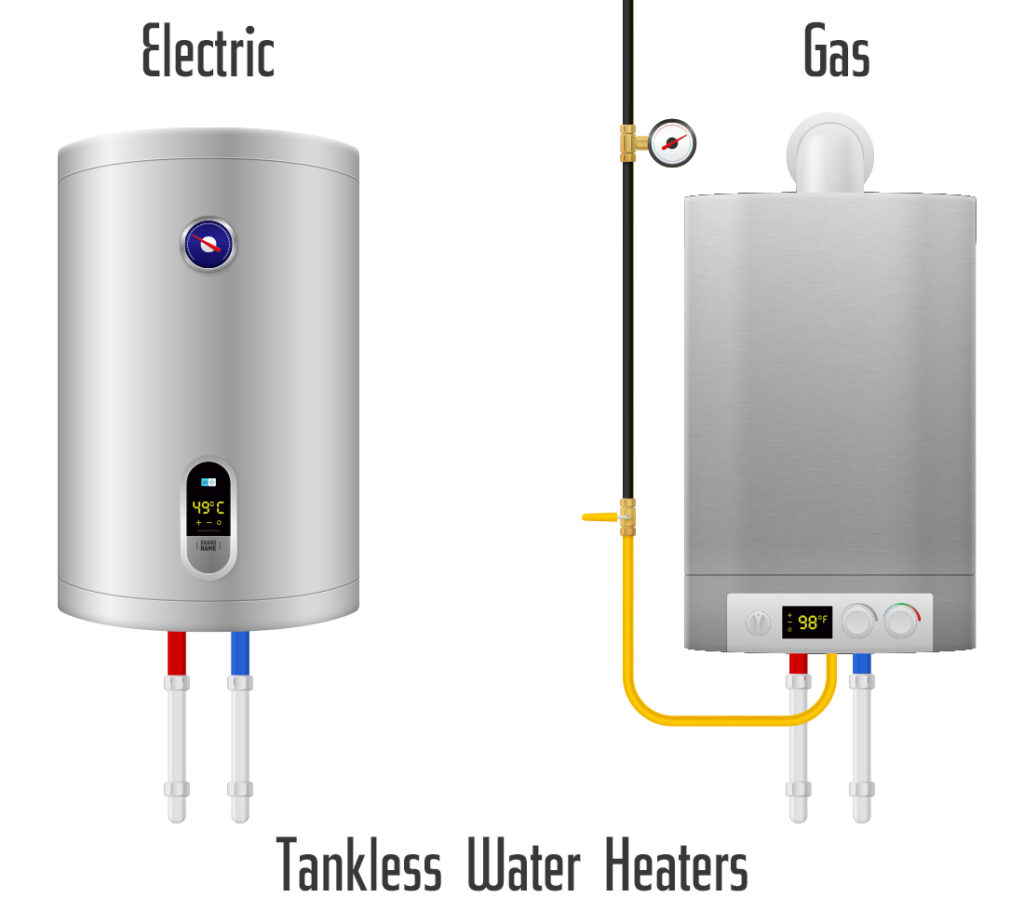
Tankless water heaters use a coil to heat cold water as and when needed. When you turn the hot water tap on, the cold water flows through the pipe and into the unit. The water is then heated by either electricity or gas burner depending on the one you’re using.
If you want to learn about the differences between Storage Water Heaters and Tankless Water Heaters, click on the following link –
Summing up
A water heater is one of the most essential but under-appreciated appliances in our homes. It’s an unsung hero as it reliably operates most of the modern conveniences taken for granted, like washing dishes, taking warm showers, and washing machines. Therefore, we need to take care of it with proper maintenance and good service.
Any home requires a water heater. When you have many options and can’t decide what’s best for you, at that time you need the selection guide. Gharpedia has published already a guide for it that will walk you through choosing the best water heater for your home.
Furthermore, To know about water heater power consumption with the cost comparison, you need to visit the following page –
Best Water Heater-How to Choose as per the Need of Your Home?
Image Courtesy: Image 7
FAQs on Water Heater Basics
1. What Are the Different Types of Water Heaters Available for Homes?
The main types include storage tank water heaters, tankless (on-demand) heaters, solar heaters, condensing heaters, and heat pump water heaters. Each differs in installation cost, efficiency, and performance.
2. How Does a Tank-Type Water Heater Work?
Cold water enters the tank through the dip tube, gets heated at the bottom using gas or electric elements, rises to the top, and exits through the hot-water outlet. The tank continuously reheats water as it is used.
3. What is the Advantage of a Tankless Water Heater?
It provides endless hot water, operates at about 80% efficiency, and has a longer lifespan (20+ years). It heats water only when needed, so no heat is wasted.
4. Are Solar Water Heaters Worth It?
Yes, if you live in a region with abundant sunlight. Solar heaters can save up to $400 yearly in operating costs and can last 20+ years. They are the most economical for long-term use but inefficient in low-sun climates.
5. What Components should I Know about Inside a Water Heater?
Important parts include the flue pipe, burner, thermostat, dip tube, anode rod, insulation, T&P relief valve, drain valve, and overflow pipe. These ensure safe heating, prevent explosions, and reduce corrosion and heat loss.
Author Bio
Fidelis Kinai – Fidelis Muti possess a bachelor’s in English and Journalism and have over four years of professional experienced writing and proofreading materials for print and online platforms, including newspapers, magazines, websites, blogs, and social media accounts. He also have over three years of experience as a marketing assistant and social media manager.
He is versatile and diligent and will produce exemplary content within time to meet your deadline.
He can deliver most work within 2-3 days; rush orders are accepted whenever possible. He is based in the Kenya but travel often and work for clients all over the world.


























